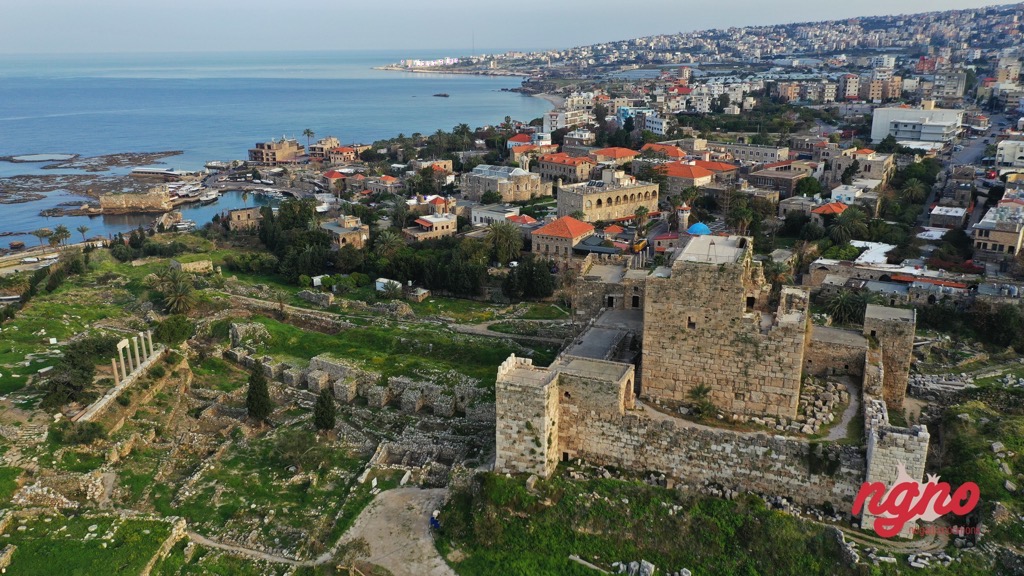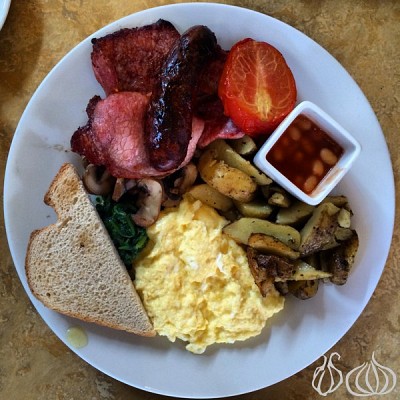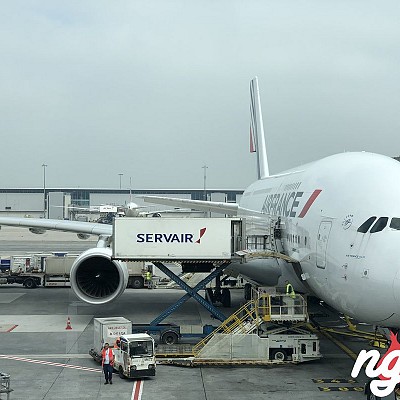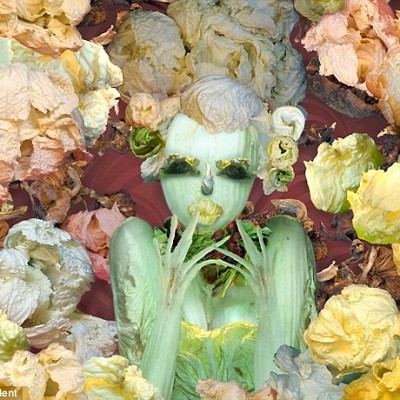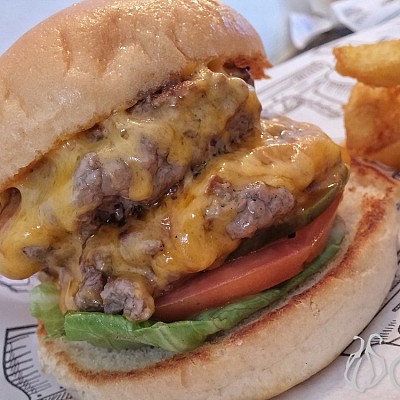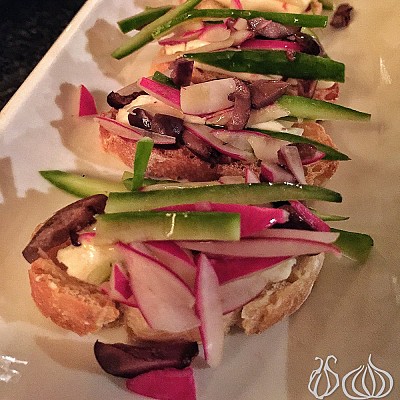Our trip to the beautiful city of Byblos started at Byblos Sur Mer, a boutique hotel on the Byblos harbor. The hotel not only boasts incredible views and a suite furnished with antique carpets, but also a dining room with a glass floor underneath which is the archeological remnants of the city.
At night, we headed to Jag Food Nation on Byblos highway, where we met up with Joe, the owner. Joe, who formerly worked in the petroleum industry, explained to me that he sought out a career in hospitality because of his love for food and people. With a perfect location in the Jbeil market, he took the opportunity to open Jag Food Nation, where he serves the food he loves. As I looked around, I was reminded of Route 66 American diners. Trying out everything from pasta to burgers and, of course, a decadent chocolate chip cookie skillet topped with ice cream and chocolate sauce. If I could have taken that skillet home with me, I would have.
Wrapping up at Jag’s, we went to our second dinner stop for the night, Zeytoun in Amchit. Zeytoun is a seafood restaurant serving all kinds of local fish. After taking a look at the fish selection, my friends and I sat down for a delicious meal.
Day 2 kicked off with the sound of birds chirping and a calming ocean view alongside coffee and room service breakfast of eggs, manakish, and a variety of other pastries. Then, we headed out to meet Salim, who harvests edible mollusk that can be eaten raw or blanched with garlic and lemon juice.
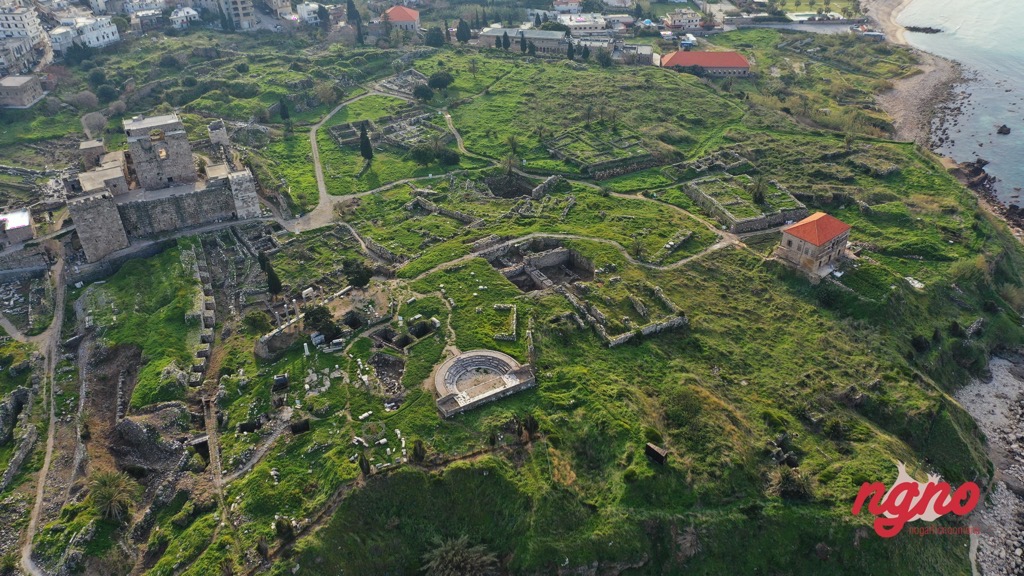
We stopped at Bake-In—a bakery that serves a perfect spinach and cheese hand pie—and continued to our next location with Mazen Rizk, a History and International Affairs student at USJ. Mazen and I discussed how Byblos is not only a city but a province with hundreds of villages all connected by roads, monuments but most importantly the people.
Over at Saj Mar Ta’ala, George Sfeir, the owner, made saj flatbread with cooked meat. Then, one of my friends, Roy, took me to Milia Salemeh’s house. Milia started a home business making pastries of all kinds. There, Milia made us regular kibbeh, which I dipped in labneh, of course, and pumpkin kibbeh.
Our next stop: Maad. We walked around Saint Rafa’a statue, the largest statue for Saint Rafa’a in the world. Mazen explained that Saint Rafa’s taught at a girls school for 7 years, where she experienced a turning point that led her to become a nun, and, ultimately, a saint. Reaching Maad’s church, Mazen gave us an overview of the importance of the church’s geographic location, the view. According to Mazen, the view, while mesmerizing, also served as a strategic location that helped locals keep watch for any invasions of Batroun’s port. Looking at the church bell, I noticed that the bell is made by Youssef and Shebly Nafaa; Youssef is Nafaa Nafaa’s father, the bell maker we met in Beit Chabab. On the inside, the walls and ceilings are covered with the remains of blue artwork. Standing in the church’s narthex, Mazen explained that this is where people would be baptized before entering the church.
Afterward, we stopped at the village’s bakery to get some mana2eesh before going to Ain Kfaa. In Ain Kfaa, we visited the house of Maroun Abboud, a Lebanese writer famous for the novel as well as social, political, and literary critique. His simplistic yet unattainable writing style is what set him apart. Ain Kfaa inspired many of his works, passing down his love for the village to the next generation. The house also includes a tremendous library with old and new books alongside a selection of books dedicated to Abboud.
Ghbaline was our next location. After climbing on the hood of the car to reach the stairs, I was able to take a look at another bell. This one was made by Saleem Nafaa, his sons, and his cousin and is much older than the one in Maad. The Rizk family home is held together by intricate stone archways. After showing me collection of old photographs and restaurant menus from Lebanon’s Golden Age, I was honored that Mazen let me take one of the menus.
Moving on to Bejjeh, we stopped at Gazetta, a guest house, and Sub Hero, to pick up sandwiches for the road. We continued to Expo Hakel, a Lebanese Fossil Museum I visited in the summer with Marc Beyrouthy. Our guide explained that rocks found at an altitude of 750 meters are cracked open to reveal 98 million-year-old fish fossils, the majority of which are now extinct. The museum hosts more than 350 types of fish and will open the quarry next month for visitors to search for fossils too. Our guide revealed that quarries were used as evidence of Noah’s deluge. Up at the quarry, I took a shot at cracking the rocks and found my very own fossils!
Over in Lehfed, we stopped by the water spring to drink before heading over to Bassam Sawma’s Talabeyta Market, a market specializing in local preserves in Mechmech. Before dinner, Bassam showed us how Arak is made. He told us that the alcohol is placed in a round contraption with a specific amount of anise, diluted, and boiled. The vapor travels to a barrel where the condensation is trapped. That condensation is what becomes Arak. When talking about his market, Bassam stressed on the fact that everything is locally made or grown: the parsley in the tabouleh, the groats, the yeast, and the flour for the bread.
Our final stop for Day 2 was the Maximus Hotel. Before we got some rest, we visited Chef Ghiwa in Le Gastronome’s kitchen. Chef Ghiwa attended the Cordon Bleu culinary school of Paris before heading Le Gastronome’s culinary team. The restaurant is located on the rooftop of the Maximus Hotel, near the LAU Jbeil campus. Wrapping up dinner with a chocolate fondant pain perdu, I went back to the room to get some shut-eye. Up next is Day 3!
We kicked off Day 3 in the dining area of Le Gastronome, where we met Chef Ghiwa and her team to make 8 types of crepe—savory and sweet, for breakfast. As she made the crepes, I made a breakfast sandwich-like crepe with eggs and cheese for Chef Ghiwa to taste. When I took a seat to dig in, I was amazed by the feast of crepes in front of me: Nutella crepe, knefe and chocolate crepe, spinach and cheese crepe, etc.
We headed off to our first location of the day: a kashkaval factory in Lehfed. Yes. Kashkaval is also made in Lebanon now, specifically in Farm Hill. Khalil, the son in this father-son duo, told us that they started 2 months ago on a whim to try to make cheese. Their kashkaval is fresh milk cheese. We tasted the cheese—which was delicious—before heading out to see their cows.
Sitting on a bench in Jaj, Imad explained the etymology of the name Jaj; it means “the peak” in Aramaic. That’s because it was considered the highest point in the northern area of Jbeil district. Imad told me that they used to cut cedar trees to send to the wood to Egypt.
When we went to the church, I couldn’t resist checking out the bells. The first bell was in fact the first one with a date engraved on it: 1954. It was made in Mazraat Yachouh by Antoun Mene’em atelier. Meanwhile, another bell was remade by Nafaa Nafaa.
We stopped by a museum in Jaj where we met Boutros Farhat, the museum’s sculptor and owner. The museum, Boutros said, is free of charge because he considers having people visit his museum an honor of its own. As we walked around, we passed by one of Boutros’s favorite pieces: An Impossible Dream. The sculpture resembles a hand trying to rewind a clock. Further, into the museum grounds, we stop at a sculpture Boutros reveals was destroyed. Coming to the museum in the morning, Boutros discovered one of his sculptures was destroyed by the storm. After pondering on how a storm was so ignorant as to destroy art, he created a new sculpture with the remains of the old one. That’s how The Ignorance of The Storm, the current sculpture, was born.
After wrapping up at the museum, we headed to the Cedars of Jaj, a 5 million meter square forest with a church. The forest, we were told, is home to an 800-year-old cedar tree.
At Al Jabaliyye, we met Issa Milad Issa who sells all-natural local products. Before serving us one of the liquors he made, Issa emphasizes the importance of taste-testing all his products. To be honest, I was a bit wary about trying liquor because it can either come of as too sweet or too alcohol-intense. However, I was delighted by the taste his liquor had. It was just right.
We, then, went to Mayfouk, to one of the Maronite centers, the Covent of Elige. The name Elige comes from the word the God of Depths in Aramaic. The convent was renovated to become the third Maronite center. Strolling around the premises, we stopped at a tree with prayer beads hanging from its branches. When asked, our guide revealed that this almond tree had died 7 years ago. Wanting to encourage people to pray, they hung up 10 strings of prayer beads. Soon enough, all the visitors were coming to pray and hang the beads. The next spring, they were shocked to find out that the tree was blossoming leaves again—not fruit, though.
We ended our tour in Jaj by visiting the areas where Saint Charbel prayed, and then we drove to Ehmej. We went to Al Baydar-La Vallee Blanche where Bassam Matta makes European-standard cheese.
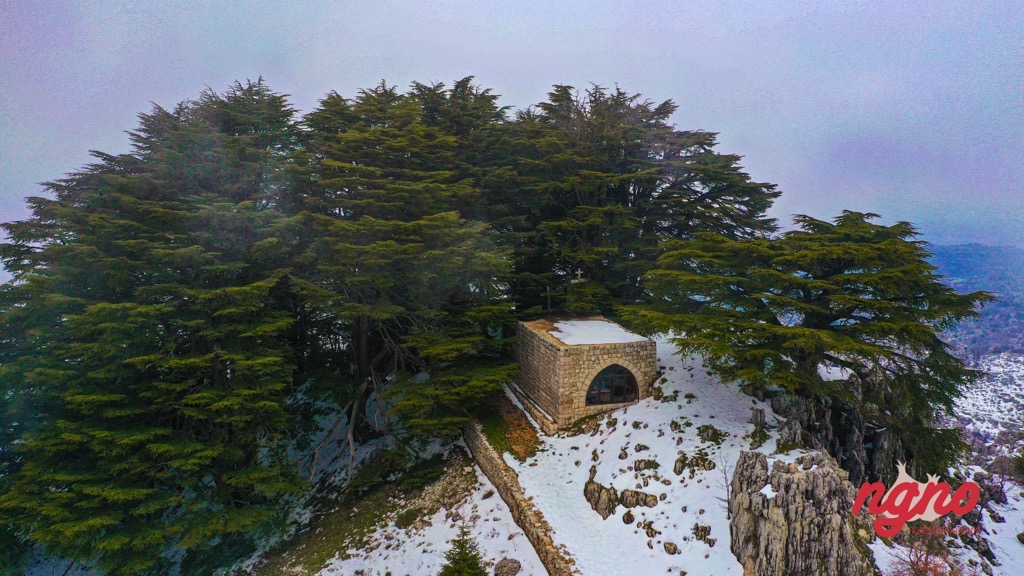
After trying many of his cheese, we left to go to Gazdaro, a restaurant on a school bus. The restaurant, located on the Aannaya-Mar Charbel road, offers everything from Saj flatbread to pasta.
Heading back to the city of Jbeil, we went into the Louis Cardahi Foundation, established in 1992 and donated to LAU in 2013. Alongside the artifacts, the museum is home to a library of 1800 books on history of Byblos and the Phoenicians.
Stopping at Khandwich, my friend Mazen’s restaurant is a given when visiting Jbeil. There, I made Mazen an egg roll burger and he made me one of his many delicious burgers.
What I discovered in Jbeil amazed me, not because of the history and heritage it holds—although, that was definitely a factor—because of the district’s people. While Day 3 wrapped up our trip to Jbeil, we’ll definitely be back for more of Jbeil and Lebanon’s many other beautiful villages.


















